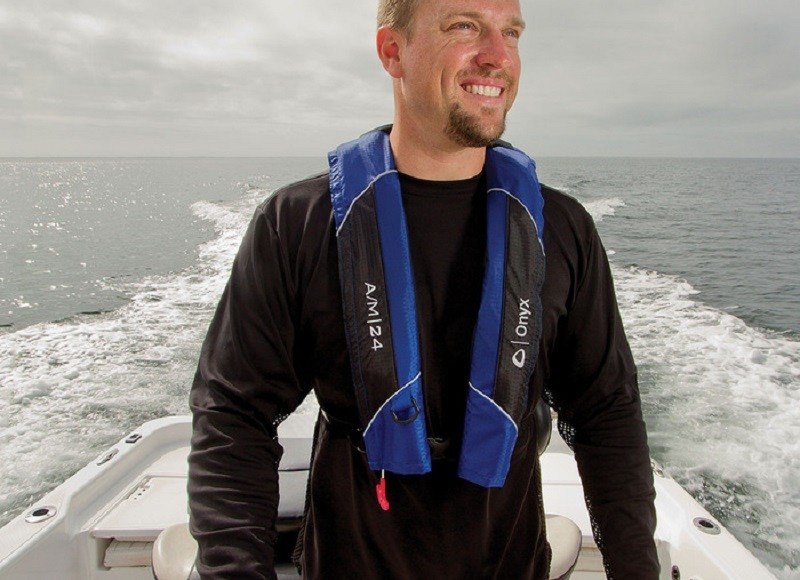Any boater or water enthusiast should know that a life jacket, or personal floatation device (PFD), can be the difference between life and death on the water. We’re noticing that more and more boaters are opting to use inflatable PFD’s on board. Are these life jackets a good choice for you?
There are two types of inflatable PFD’s, the self-inflating life vest or the manually-inflating vest. Both of these types contain a backup oral inflation tube in the event that the main inflation should fail. A self-inflating vest automatically inflates when it is submerged in water or a cord is pulled. A CO2 cartridge is activated when a pin is dissolved by water and the vest inflates. There is a short lag time between the time the jacket is submerged and when it inflates, so keep this in mind when selecting a PFD for non-swimmers or young children.
The manual inflating life vest is similar in most ways to the self-inflating life vest, except for the way it is activated. The wearer must pull a rip cord on the manually inflating vest to activate the CO2 cartridge to cause the jacket to inflate. In most situations the less-expensive manual inflating PFD would be all you need. The downside of this vest would be your inability to pull the rip cord in an emergency situation due to loss of consciousness, limited hand or arm mobility, or just sheer panic. These particular instances are rare, but an auto-inflating vest could save your life.
Another consideration is whether the vest you are considering is Coast Guard approved for the way you’ll use it. For example, if you are going to spend most of your time boating in open waters, you should be looking at a Type I, II, or V PFD. However, if your time on the water will be spent more typically on a lake or inland waters, a Type III might be fine. Inflatable life vests are typically rated as a specialty PFD (Type V), but be sure to check that out before buying.
Note also that inflatables must be more regularly inspected than traditional vests. The CO2 cartridges must be in working order and regular tests to the bladder should be performed to make sure there is no leak. An inflatable life vest that doesn’t inflate won’t be of much assistance in the event of an emergency.
Whichever type of inflatable vest you choose, the inflatable life vest is much less bulky than its traditional counterparts, making it easier to store when not in use. Because of its slim nature, the inflatable life vest is also more comfortable to wear, and no PFD is effective unless you’re wearing it.
